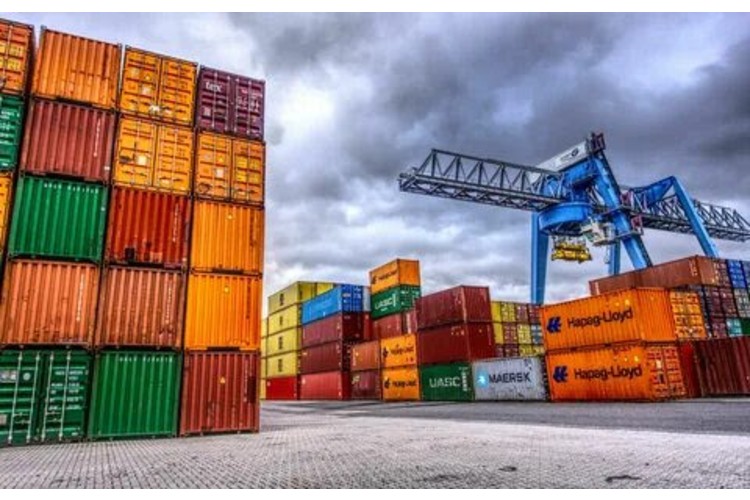Global trade has always been the backbone of economic development, and few innovations have transformed it as profoundly as the shipping container. From its humble origins in the mid-20th century, the container has evolved into a standardized, indispensable unit that fuels seamless logistics, reduces costs, and accelerates international commerce. Today, the Shipping Containers Market is not only a vital part of global supply chains but also a catalyst for sustainability, digital transformation, and innovation in logistics.
The Evolution of Shipping Containers: From Innovation to Necessity
Before the standardization of containers, goods were loaded manually onto ships in sacks, barrels, and crates—a labor-intensive process that consumed time and money. The introduction of standardized shipping containers revolutionized maritime trade by simplifying loading, improving efficiency, and ensuring secure transportation. Over decades, these containers became the universal language of trade, uniting ports, shipping companies, and logistics firms across continents.
What started as an innovation for efficiency soon became an absolute necessity. Today, an estimated 90% of non-bulk cargo worldwide is transported using containers, underscoring their critical role in the modern economy.
Globalization and the Container Revolution
The rise of globalization is inseparable from the story of shipping containers. With their ability to move goods across oceans quickly and safely, containers helped businesses expand into new markets. Manufacturers gained access to international suppliers, while consumers enjoyed products from every corner of the globe at competitive prices.
The Shipping Containers Market continues to thrive because of this interconnectedness. Rapid urbanization, population growth, and cross-border trade agreements ensure a steady demand for efficient, cost-effective cargo transport. Whether it’s electronics from Asia, food products from South America, or machinery from Europe, containers remain the silent enablers of global commerce.
E-Commerce Boom and Last-Mile Delivery Needs
The explosive growth of e-commerce has further reinforced the importance of containers. As online retailers expand globally, demand for efficient storage and shipping solutions has skyrocketed. Containers, particularly modular and customized variants, are increasingly used not just for international transport but also for warehousing, retail storage, and last-mile delivery solutions.
Logistics firms are leveraging smart containers—equipped with IoT sensors—to track shipments in real time, ensuring transparency for businesses and consumers alike. This trend has created new opportunities within the Shipping Containers Market, blending traditional maritime trade with cutting-edge digital logistics.
Technological Advancements: Smart Containers and Automation
The future of global trade hinges on technology, and containers are at the center of this transformation. Smart containers are reshaping supply chain visibility with built-in sensors that monitor location, temperature, and humidity. These capabilities are especially vital for perishable goods like pharmaceuticals, fresh produce, and seafood.
Automation in ports, including robotic cranes and AI-powered tracking systems, complements this trend by reducing turnaround times and optimizing container movement. As digitalization advances, containers are no longer passive units of transport—they are becoming intelligent assets that drive smarter logistics.
Sustainability: Containers in a Green Economy
With global attention shifting toward environmental sustainability, containers are also undergoing a green revolution. Traditional shipping has long faced criticism for its carbon footprint, but innovations are steering the industry toward eco-friendly practices. Recyclable materials, lightweight container designs, and alternative fuels for ships are all contributing to reduced emissions.
Repurposed containers are also making waves in construction, retail, and housing. From pop-up shops and cafés to affordable modular homes, the creative reuse of shipping containers highlights their potential beyond logistics. This circular economy approach strengthens the Shipping Containers Market by broadening its application while supporting global sustainability goals.
Regional Dynamics: Where Growth Is Accelerating
- Asia Pacific remains the largest hub for container trade, thanks to manufacturing powerhouses like China, Japan, and South Korea. Mega-ports such as Shanghai and Singapore handle millions of TEUs (twenty-foot equivalent units) annually, making the region the beating heart of global trade.
- Europe leverages its regulatory focus on sustainability, driving innovation in green logistics and multimodal container transport across rail, road, and sea.
- North America benefits from rising e-commerce penetration and heavy investments in port modernization, ensuring competitiveness in the transpacific trade routes.
This regional dynamism reflects the resilience and adaptability of the industry, enabling the Shipping Containers Market to remain robust despite geopolitical uncertainties, fluctuating demand, and supply chain disruptions.
Challenges Facing the Industry
While shipping containers have transformed trade, the industry also faces significant challenges:
- Geopolitical tensions disrupt traditional trade routes and create imbalances in container availability.
- Supply chain bottlenecks such as port congestion and labor shortages can drive up shipping costs.
- Price volatility in raw materials like steel impacts container manufacturing costs.
- Environmental regulations add compliance pressures, requiring companies to adopt sustainable practices at higher initial investments.
Addressing these challenges demands collaborative strategies from governments, logistics providers, and manufacturers.
Opportunities on the Horizon
Despite hurdles, the outlook for containers remains optimistic. Growth opportunities lie in:
- Expanding reefer containers for pharmaceuticals and food logistics.
- Adoption of blockchain technology for secure, transparent documentation in trade.
- Rising demand for modular container solutions in construction, healthcare, and retail.
- Integration of AI and predictive analytics to streamline container fleet management.
Industry experts, including insights from Fairfield Market Research, suggest that companies investing in sustainability, smart technology, and diversification will capture significant value in the decade ahead.
The Road Ahead: Resilience and Innovation
As the backbone of global trade, containers are not static—they continuously evolve to meet the demands of modern economies. From smart tracking to sustainable design, the industry is embracing resilience and innovation. The COVID-19 pandemic exposed vulnerabilities in supply chains, yet it also accelerated the adoption of digital and sustainable practices in container logistics.
The future promises a more connected, transparent, and eco-friendly container ecosystem. With e-commerce booming, infrastructure investments rising, and sustainability becoming non-negotiable, containers will remain central to the functioning of global trade.
The journey of shipping containers—from a simple steel box to a symbol of globalization and innovation—underscores their unmatched role in shaping modern trade. As businesses and governments focus on efficiency, sustainability, and technology, the Shipping Containers Market will continue to expand, adapting to new realities of commerce and logistics.
For industries and policymakers alike, the message is clear: the humble shipping container is not just a tool for transportation—it is the foundation upon which the future of global trade is being built.











